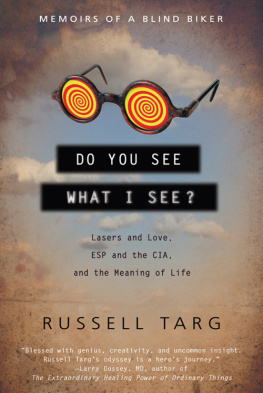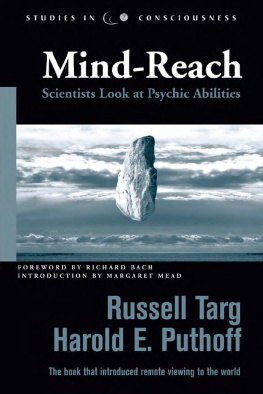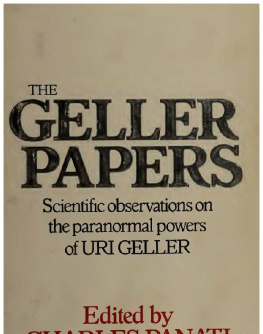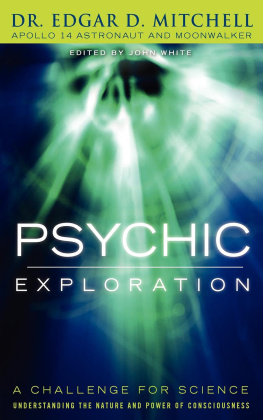
THE REALITY OF ESP
A Physicists Proof of Psychic Abilities
Russell Targ
Foreword by Stephan A. Schwartz

Learn more about Russell Targ and his work at www.espresearch.com
Find more books like this at www.questbooks.net
Copyright 2012 by Russell Targ
Foreword copyright by Stephan A. Schwartz
First Quest Edition 2012
Without limiting the rights under copyright reserved above, no part of this publication may be reproduced, stored in or introduced into a retrieval system, or transmitted, in any form, or by any means (electronic, mechanical, photocopying, recording, or otherwise), without the prior written permission of the publisher of this book.
The scanning, uploading, and distribution of this book via the Internet or via any other means without the permission of the publisher is illegal and punishable by law. Please purchase only authorized electronic editions, and do not participate in or encourage electronic piracy of copyrighted materials.
While the author has made every effort to provide accurate telephone numbers and Internet addresses at the time of publication, neither the publisher nor the author assumes any responsibility for errors or for changes that occur after publication. Further, the publisher does not have any control over and does not assume any responsibility for author or third-party websites or their content.
For additional information contact
Quest Books
Theosophical Publishing House
P. O. Box 270
Wheaton, IL 60187-0270
Cover design by Drew Stevens
Illustration credits:
Page 211, drawings by Dr. Elizabeth Rauscher
Library of Congress Cataloging-in-Publication Data
Targ, Russell.
The reality of ESP: a physicists proof of psychic abilities / Russell Targ: foreword by Stephan A. Schwartz1st Quest ed.
p. cm.
Includes bibliographical references.
ISBN 978-0-8356-0884-8
1. Extrasensory perception. I. Title.
BF1321.T366 2012
133.8dc23 2011041948
ISBN for electronic edition, e-pub format: 978-0-8356-2061-1
5 4 3 2 * 12 13 14 15 16
For Ingo Swann,
and for all who cherish our capacity
for unobstructed awareness
If the doors of perception were cleansed,
every thing would appear to man as it is, infinite.
For man has closed himself up,
till he sees all things through narrow chinks of his cavern.
William Blake
Skepticism is not unanswerable, but obviously nonsensical,
when it tries to raise doubts where no question can be asked.
Ludwig Wittgenstein
Illustrations
Tables
Foreword
A Matter of Proof
In a book that claims to present proof, it is worth considering what proof means exactly. Russell Targs version, which he presents in the preface of this book, is as follows:
Scientists usually define proof as overwhelming evidence, so strong that it would be logically or probabilistically unreasonable to deny the supported argument. Proof establishes knowledge or the truth of a conclusionsuch as aspirin preventing heart attacks, in which case the evidence was so strong that the National Institutes of Health stopped the experiments to avoid killing off the untreated controls.
What I present here is not a mathematical proof but rather published experimental evidence from Stanford Research Institute (SRI) and from laboratories across the country. Based on all these decades of data, I believe it would be logically and empirically incoherent to deny the existence of some kind of human ability for direct awareness or experience of distant events that are blocked from ordinary perception, such experience being commonly known as ESP. I say this while fully recognizing that all scientific knowledge is provisional and never immune from subsequent revision...
Is the overwhelming evidence Targ requires actually present in this book? You will read it and make your own determination, but consider this assessment of just the remote-viewing work of which Targ himself was co-investigator with fellow physicists Harold Puthoff and Edwin May:
In 1995 the US Congress commissioned the American Institutes for Research (AIR), a not-for-profit think tank based in Washington, D.C. with a long history of work in human performance and close government ties, to assess the reality of remote viewing in research the US government had previously funded.
To make the assessment, AIR selected the nationally recognized statistics professor Jessica Utts of the University of California, Davis, and the well-known skeptic Ray Hyman, a psychology professor at the University of Oregon and a fellow of the Committee for the Scientific Investigation of Claims of the Paranormal (now the Committee for Skeptical Inquiry). Both had previously written on this topic and were notably sophisticated in the issues involved. Utts, in 1991, had already addressed the question that Congress was asking in a paper published in the journal Statistical Science.
AIR asked both Hyman and Utts to produce an independent report by a fixed date. Utts complied and submitted her report by the deadline. Hyman did not. As a result, he was able to see her report before writing his own; and the approach he chose to take, when he did write, was largely a commentary on her analysis. To compensate for this inequity, AIR allowed Utts to write a response that was incorporated into the final document submitted to Congress. It is in this unplanned form of exchange that the essence of the two positions is revealed. Uttss initial statement is remarkable for its clarity. She wrote:
Using the standards applied to any other area of science, it is concluded that psychic functioning has been well established. The statistical results of the studies examined are far beyond what is expected by chance. Arguments that these results could be due to methodological flaws in the experiments are soundly refuted. Effects of similar magnitude have been replicated at a number of laboratories across the
In responding to Uttss report, Hyman wrote:
I want to state that we agree on many [other] points. We both agree that the experiments [being assessed] were free of the methodological weaknesses that plagued the early... research. We also agree that the... experiments appear to be free of the more obvious and better known flaws that can invalidate the results of parapsychological investigations. We agree that the effect sizes reported... are too large and consistent to be dismissed as statistical flukes.
This acknowledgment is important because what Hyman is conceding is that the way in which the kinds of laboratory experiments described in the AIR report had been conducted, and the way in which they were analyzed, is no longer a matter for dispute. In other words, the nonlocal perception required to carry out a remote viewing successfully cannot be explained away as some artifact resulting from how the data were collected or evaluated.
Consider also that universities and labs all over the world are now using four different protocols experimentally, those protocols being Remote Viewing, the Ganzfeld, Random Number Generation Perturbations, and Presentiment. The results collectively, by protocol, each show a six-sigma effect. Basically, that means that the odds are one in a billion that the results could have occurred by chance. The importance of this statistic becomes clear when we realize that one in a mere















